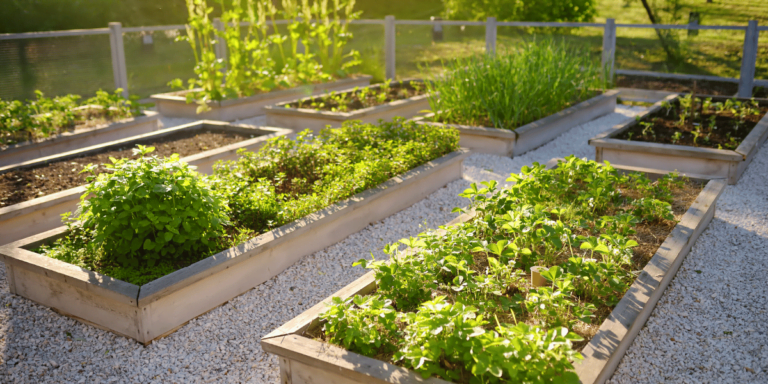Sky-high gardening is a growing trend in urban areas, where rooftop gardens are transforming overlooked spaces into vibrant, sustainable oases. These green rooftops offer a unique opportunity to create a connection with nature and enhance the urban landscape with eco-friendly design principles.
With their proximity to the sky, rooftop gardens provide a sense of tranquility and escape from the bustling city streets. By incorporating thoughtful landscape design and embracing sustainable practices, these urban oases contribute to a healthier and more vibrant living environment. Let’s dive into the world of sky-high gardening and explore tips for creating stunning rooftop green spaces that are both sustainable and visually appealing.
Key Takeaways:
- Sky-High gardening is a popular trend in urban areas.
- Rooftop gardens offer a unique opportunity to create sustainable, eco-friendly green spaces.
- Architectural innovations and landscape design principles are essential for successful rooftop gardens.
- Rooftop gardens can be transformed into tranquil oases with the right design elements.
- Careful plant selection and innovative water conservation techniques are crucial for overcoming challenges in rooftop gardening.
Maximizing Space with Rooftop Design
One of the key benefits of rooftop gardening is the ability to maximize space in urban areas where every inch counts. Designers and landscape architects encourage the use of space-efficient techniques such as vertical gardening and urban permaculture practices. These approaches allow for the cultivation of a wide variety of plants in a small footprint.
Vertical gardening involves growing plants in vertical structures, such as living walls, trellises, or stacked containers. This technique not only saves space but also creates an aesthetically pleasing display. By utilizing vertical space, urban gardeners can grow a diverse range of plants, from flowering vines to herbs and vegetables.
Urban permaculture practices, on the other hand, focus on creating self-sustaining and resilient ecosystems within urban environments. These practices incorporate elements such as companion planting, organic soil improvement, and water conservation. By designing rooftop gardens with permaculture principles in mind, gardeners can optimize the use of limited space while promoting ecological sustainability.
Smart Garden Automation
Rooftop gardens can also benefit from smart garden automation systems, which enable efficient and convenient maintenance. These automated systems can be used to regulate irrigation, monitor soil moisture levels, and control lighting conditions. By automating these processes, rooftop gardeners can ensure that their plants receive the necessary care while minimizing manual efforts.
For example, drip irrigation systems can be integrated into rooftop gardens to provide water directly to the plant’s roots, reducing water waste through evaporation. Smart sensors connected to these systems can monitor soil moisture levels and automatically adjust watering schedules, ensuring optimal hydration for the plants.
Furthermore, smart garden automation systems can control lighting conditions in rooftop gardens. By adjusting the duration and intensity of artificial lighting, these systems can simulate natural sunlight and promote healthy growth for plants that may not receive adequate sunlight due to the urban landscape.
Whether it’s growing herbs and vegetables in vertical planters or implementing automated irrigation systems, the combination of space-efficient techniques and smart garden automation allows rooftop gardens to flourish in urban settings. These design strategies not only maximize space but also foster sustainable and productive green spaces that contribute to a greener and healthier urban environment.
Creating a Sky-High Gardening Rooftop Oasis
A rooftop garden can be transformed into a tranquil oasis with the right design elements. By incorporating organic composting methods, rooftop gardens can create a sustainable cycle of nutrient-rich soil. Green roof ecosystems, which utilize a variety of native plants, help to create a habitat for wildlife and support biodiversity in urban areas. Contemporary garden artistry can be integrated into rooftop designs to add visual appeal and create a unique atmosphere. From sculptures to installations, these artistic elements enhance the overall aesthetics of the rooftop garden and provide an opportunity for self-expression.
To create a thriving rooftop oasis, organic composting methods are essential. By composting organic waste materials, such as kitchen scraps and garden trimmings, rooftop gardens can produce nutrient-rich soil amendments. This sustainable practice not only reduces waste but also improves the vitality of the plants in the garden. Through composting, the garden benefits from the recycling of nutrients and the maintenance of healthy soil for optimal plant growth.
In addition to organic composting, green roof ecosystems play a crucial role in creating an oasis in an urban setting. By incorporating a diverse range of native plants, rooftop gardens can attract various wildlife species and promote biodiversity. These green roof ecosystems provide much-needed habitats for birds, bees, butterflies, and other pollinators. They also help to mitigate the negative effects of urbanization, such as air pollution and the urban heat island effect.
Contemporary garden artistry is another aspect that can elevate a rooftop oasis to new heights. By incorporating sculptures, installations, or other artistic elements, rooftop gardens become not just green spaces but visually stunning works of art. These creative additions enhance the overall aesthetics of the garden while providing an opportunity for self-expression and personalization. Whether it’s a carefully crafted sculpture, a thought-provoking installation or a vibrant mural, contemporary garden artistry elevates the rooftop oasis and creates a unique atmosphere for relaxation and enjoyment.
Benefits of Organic Composting Methods:
- Reduces waste and promotes sustainability
- Improves soil fertility and nutrient availability
- Enhances plant vitality and growth
- Minimizes the need for synthetic fertilizers
Green Roof Ecosystems and Wildlife Habitat Creation:
- Supports biodiversity in urban environments
- Provides habitats for birds, bees, and other pollinators
- Mitigates air pollution and the urban heat island effect
- Creates a visually appealing and vibrant rooftop landscape
Integrating Contemporary Garden Artistry:
- Adds visual appeal and enhances the aesthetic value of the garden
- Allows for self-expression and personalization
- Creates a unique and inviting atmosphere
- Fosters a sense of creativity and inspiration
Overcoming Challenges in Rooftop Sky-High Gardening
Rooftop gardening presents unique challenges due to the harsh environment it entails. These challenges include exposure to strong winds and intense heat, which can be detrimental to plants. However, with careful planning and innovative solutions, these challenges can be overcome, resulting in thriving rooftop gardens.
Plant Selection
The first step in overcoming challenges in rooftop gardening is selecting plants that can withstand the harsh rooftop environment. Drought-tolerant and shade-tolerant varieties are ideal for rooftop gardens as they can survive with minimal water and limited direct sunlight. Wind resistance is also essential, so choosing plants with sturdy stems and flexible leaves is recommended.
Here are a few examples of plants that are well-suited for rooftop gardens:
- Sedums: These succulent plants are excellent for rooftop gardens as they require little water and can handle strong winds.
- Grasses: Varieties like Feather Reed Grass (Calamagrostis acutiflora) and Blue Fescue (Festuca glauca) are both drought-tolerant and wind-resistant, making them great choices.
- Herbs: Culinary herbs like rosemary, thyme, and oregano are not only heat and wind-resistant but also offer the added benefit of fresh ingredients for cooking.
Innovative Water Conservation Techniques
Water conservation is crucial in rooftop gardening to ensure proper irrigation without wasting resources. Adopting innovative techniques can help maximize water efficiency:
- Drip irrigation systems: These systems deliver water directly to the plant roots, minimizing evaporation and water loss. They are efficient and can be easily installed in rooftop gardens.
- Water retention mats: These mats help retain moisture in the soil, reducing the need for frequent watering.
- Rainwater harvesting: Collecting and utilizing rainwater helps conserve water and provide a sustainable water source for rooftop gardens.
Implementing these innovative water conservation techniques not only reduces water usage but also promotes the long-term health and sustainability of rooftop gardens.
Case Study: Wind and Heat Resistance
| Plant Name | Wind Resistance | Heat Resistance |
|---|---|---|
| Sedum ‘Autumn Joy’ | High | High |
| Feather Reed Grass | High | High |
| Blue Fescue | High | High |
| Rosemary | Moderate | High |
| Thyme | Moderate | High |
The table above showcases the wind and heat resistance of selected plants commonly used in rooftop gardens. These plants have been selected based on their ability to thrive in challenging rooftop environments, providing valuable insights for successful rooftop gardening.
Greening the Rooftop Sky-High Gardening Landscape
Rooftop gardening provides a unique opportunity to contribute to a more sustainable and eco-friendly environment. By renovating existing rooftops into green spaces, we can reduce energy consumption, mitigate the urban heat island effect, and improve overall air quality. Integrating renewable energy sources, such as solar panels, into rooftop gardens further enhances their sustainability. By embracing biophilic design principles, which focus on incorporating natural elements into the built environment, we can create a harmonious and visually appealing rooftop landscape that fosters a deeper connection with nature.
One of the key advantages of transforming rooftops into eco-gardens is the ability to reduce energy consumption. With the right design and plant selection, green roofs can effectively insulate buildings, reducing the need for excessive heating or cooling. Additionally, the presence of vegetation helps to filter air pollutants, resulting in improved air quality for both the building occupants and the surrounding environment.
Incorporating renewable energy sources into rooftop gardens is another way to boost their eco-friendliness. Solar panels can be installed on rooftops, harnessing the power of the sun to generate clean and renewable energy. This not only reduces reliance on traditional electricity sources but also helps to offset carbon emissions, creating a more sustainable energy balance.
Furthermore, biophilic design principles play a significant role in creating visually appealing and sustainable rooftop landscapes. By integrating natural elements such as plants, water features, and natural materials, we can enhance the overall aesthetics of the space while promoting biodiversity. Green roofs can act as habitats for birds, butterflies, and other wildlife, providing them with a refuge in urban areas. The presence of greenery also has a positive impact on human well-being, promoting relaxation, reducing stress, and increasing overall happiness.
Benefits of Greening the Rooftop Landscape:
- Reduces energy consumption
- Mitigates the urban heat island effect
- Improves air quality
- Enhances visual appeal
- Promotes biodiversity
- Provides habitats for wildlife
- Boosts human well-being
- Offsets carbon emissions
By greening the rooftop landscape, we can transform these previously unused spaces into thriving eco-gardens that benefit both the environment and the community. Through eco-friendly garden renovation, the integration of renewable energy sources, and the application of biophilic design principles, rooftop gardens become more than just green spaces. They become symbols of a sustainable future, creating a healthier and more vibrant urban environment.
Conclusion
Sky-High gardening is taking on new heights with the innovative concept of rooftop gardens. These unique green spaces offer a multitude of benefits, from creating a visually appealing landscape to promoting environmental sustainability in densely populated areas. By incorporating eco-friendly landscape design principles and innovative water conservation techniques, rooftop gardens have the potential to transform the urban landscape into a healthier and more vibrant living environment.
One of the key advantages of rooftop gardens is their ability to maximize space in urban areas where land is limited. Through space-efficient techniques such as vertical gardening and urban permaculture practices, these gardens can produce an abundance of plants within a small footprint. Additionally, the integration of smart garden automation systems ensures efficient maintenance and sustainable growth of rooftop green spaces.
Despite the challenges associated with the rooftop environment, such as harsh weather conditions and limited access to water, sustainable solutions can overcome these obstacles. Plant selection plays a crucial role in rooftop gardening, emphasizing drought-tolerant and wind-resistant varieties. Innovative water conservation techniques, like drip irrigation systems, enable efficient watering while minimizing resource wastage.
Overall, sustainable urban gardening through rooftop gardens represents a holistic approach to creating green spaces in urban areas. By focusing on sustainable practices, eco-friendly landscape design, and innovative water conservation techniques, we can harness the potential of rooftop gardens to improve the quality of our urban living environments and create a greener, healthier future.
FAQ
What is sky-high gardening?
Sky-high gardening refers to the practice of creating gardens on rooftops, utilizing the available space to bring nature to urban areas.
What are the benefits of rooftop gardening?
Rooftop gardening allows for the maximization of space in densely populated urban areas, provides green oases for relaxation, and contributes to environmental sustainability.
How can I maximize space in rooftop gardens?
Space-efficient techniques such as vertical gardening and urban permaculture practices are encouraged for cultivating a wide variety of plants in a small footprint.
How can smart garden automation be integrated into rooftop gardens?
Smart garden automation systems can be implemented for efficient and convenient maintenance of rooftop gardens, including automated irrigation systems and vertical planters.
How can I create a tranquil oasis on my rooftop garden?
By incorporating elements such as organic composting methods, green roof ecosystems, and contemporary garden artistry, you can transform your rooftop garden into a serene oasis.
What challenges are there in rooftop gardening?
Rooftop environments can be harsh with exposure to strong winds and intense heat. Plant selection, wind and heat resistance, and innovative water conservation techniques are key considerations.
How can rooftop gardens contribute to a more sustainable environment?
By renovating existing rooftops into green spaces, rooftop gardens reduce energy consumption, mitigate the urban heat island effect, and improve air quality. Integration of renewable energy sources and biophilic design principles can enhance sustainability further.
















